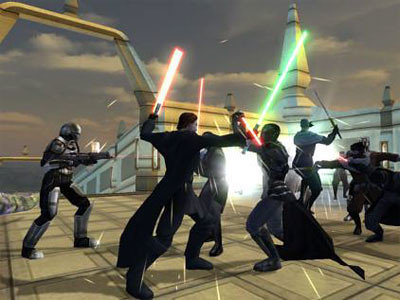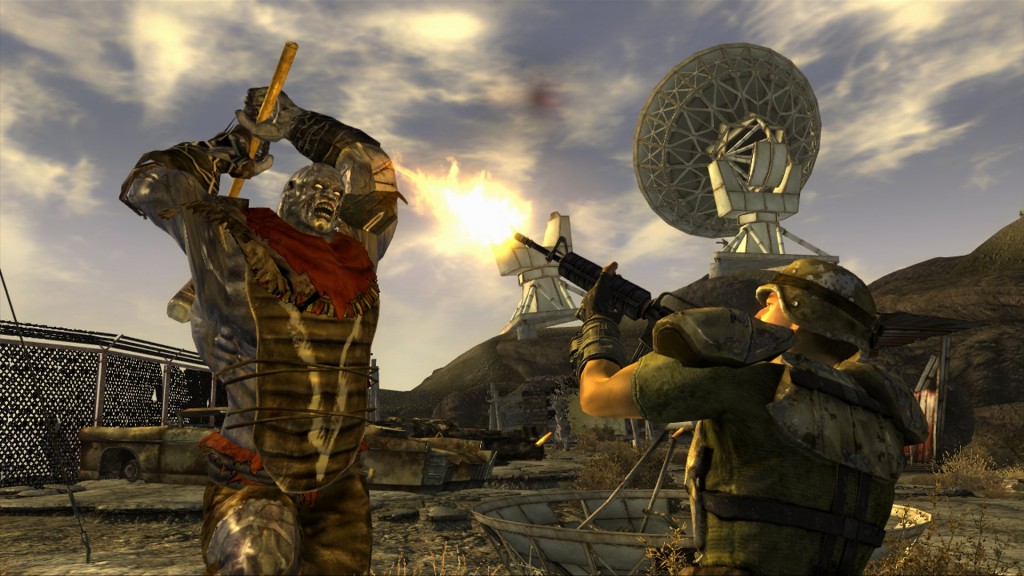Fallout: New Vegas might just be the most important game ever for developer Obsidian Entertainment. It’s certainly going to be one of their most high-profile games, but New Vegas is also their best opportunity in years for their talents to shine through.
If you’re reading this than you’re probably already familiar with Obsidian’s origins, how it’s comprised of members of Black Isle Studios, the guys who made the first two Fallout games and a couple other really great PC RPGs in the late 90s and early 2000s. If you don’t know that story, feel free to check out my feature last week on the origins of the Fallout franchise here. I see this article as a companion piece to that, building off some of my thoughts on Obsidian.
I closed out last week’s article by saying that it seemed the best days of the Fallout franchise are still ahead of it, and I hope to be able to say the same thing about Obsidian. You see, they’ve always been a very well-intentioned company, but they’ve often struggled with finding the right technology to translate their ideas into games.
From the start, their track record was on the spotty side. Their first game post-Black Isle was Star Wars: Knights of the Old Republic II for Lucas Arts. They were recommended to the publisher by Bioware, developers of the first KOTOR who were busy working on the Xbox game Jade Empire at the time. While KOTOR II added new abilities, classes and some great villains to the franchise, it was infamous for being shipped with numerous glitches and a final area that was literally shipped unfinished.
In retrospect, these were probably more the fault of Lucas Arts for giving the new studio a very short development time – KOTOR II hit shelves only 16 months after its predecessor – but it was still an inauspicious start. Though it received positive reviews overall, KOTOR II still led to some pegging Obsidian as the Bioware B-team.

Unfortunately, this is a reputation that would dog them for a while longer as their next project was Neverwinter Nights II, another sequel to a Bioware developed hit. Though the single-player campaign was much more ambitious than that of the first Neverwinter Nights (even giving players a keep to upgrade as they saw fit) the game once again suffered from glitches as well as a shoddy camera.
Throw into the mix that their latest game was this summer’s Alpha Protocol, a game that was originally to have been released last fall and garnered mixed reviews upon release, and well, it’s not the best track record for the team that helped launch Fallout.
It’s all the more a shame because Obsidian is responsible for introducing some really great ideas into modern RPGs. Knights of the Old Republic II was the first RPG where you could gain or lose influence with your party members based on your actions. This concept has been copied over by Bioware into Dragon Age and a streamlined version of it can also be found in the loyalty system of Mass Effect 2. Likewise, Alpha Protocol gave your character different benefits depending on what his relationship was with his teammates. A different bonus might be given if an NPC liked your character versus disliking him, a concept which Bioware is copying for Dragon Age 2.
I do feel the need to mention Mask of the Betrayer, Obsidian’s first expansion pack to Neverwinter Nights 2. Not only does it contain a fantastic story, much better than that of the full game, but it also includes a great example of combining narrative and gameplay. Your character has been cursed to become a spirit-eater, whereby you have to consume ghosts, nature spirits and the like in order to continue to live and quell an ever-growing, unnatural hunger. If you don’t, you’re little spirit energy bar will gradually decrease, leading to statistical penalties and ultimately death. Some players found this tedious, but I thought it was a really clever way to get across the narrative point “OMG you’re a monster!” without resorting to just sticking horns on your character’s head or something. It also demonstrates that once Obsidian has their technology more or less figured out, they have a chance to be really creative.

What excites me most about New Vegas is that Obsidian is using
Of course, I’m going to have to reserve final judgment until I’m able to play New Vegas for myself. In this case though, I feel pretty comfortable betting on the house.